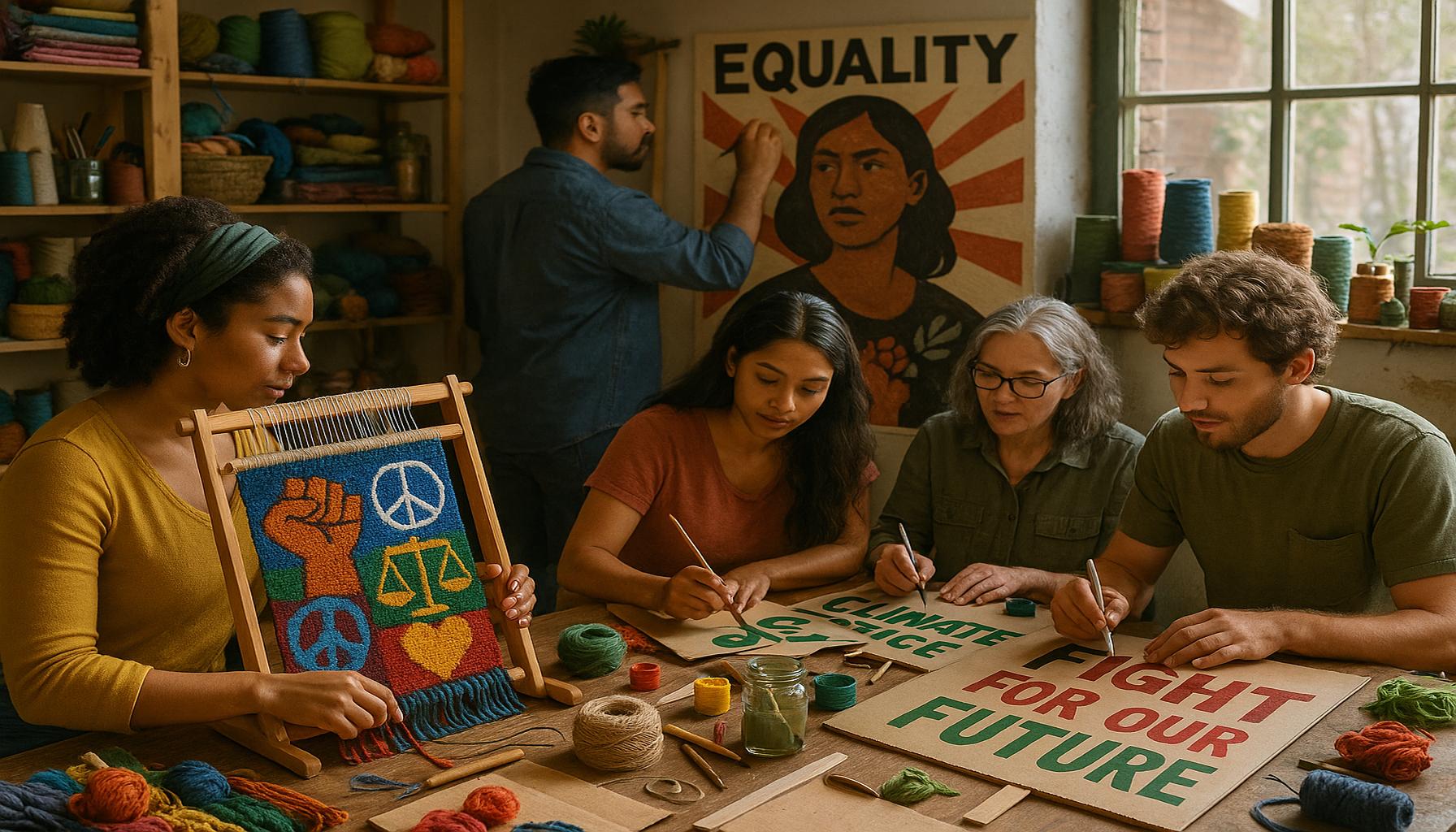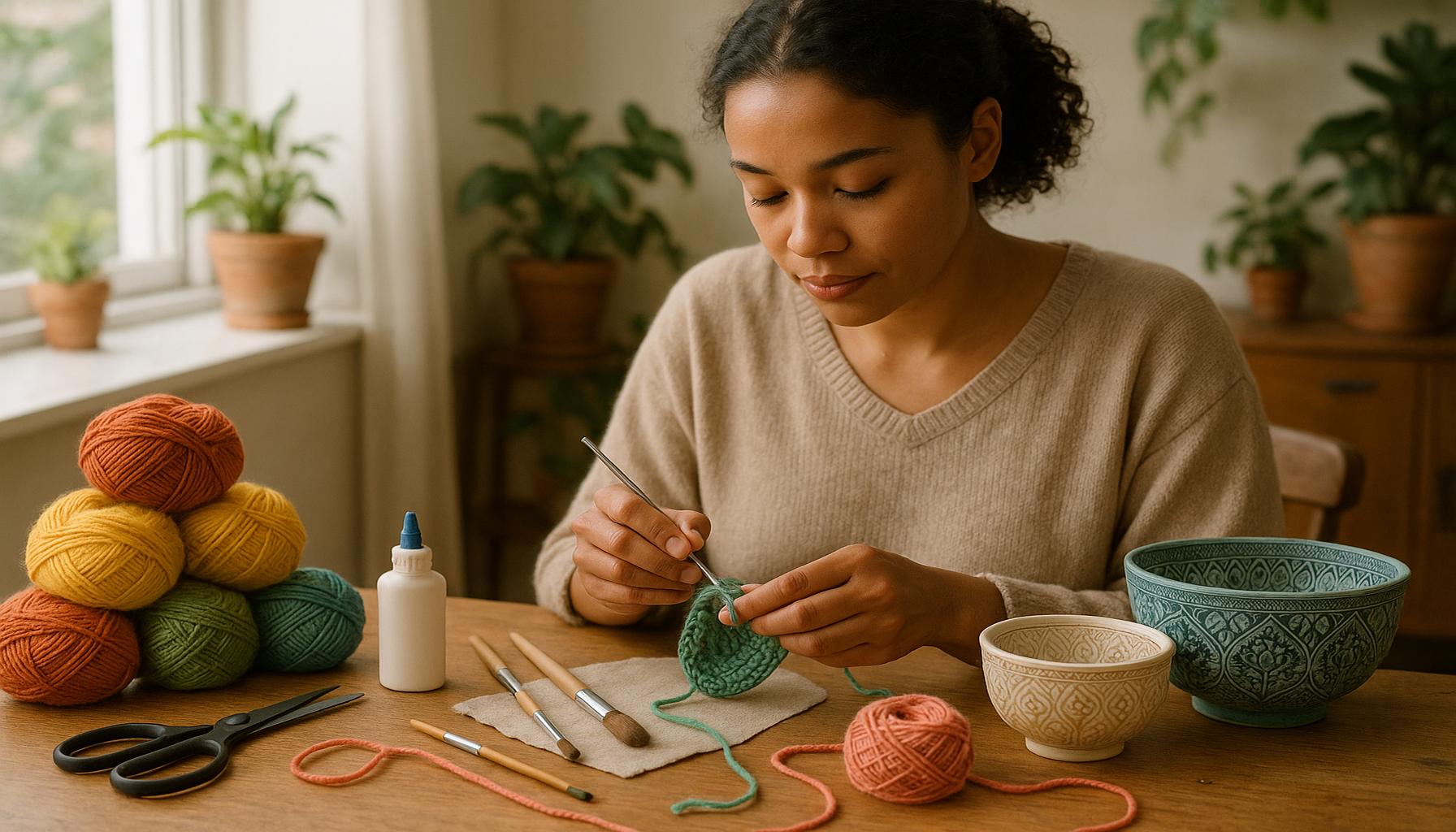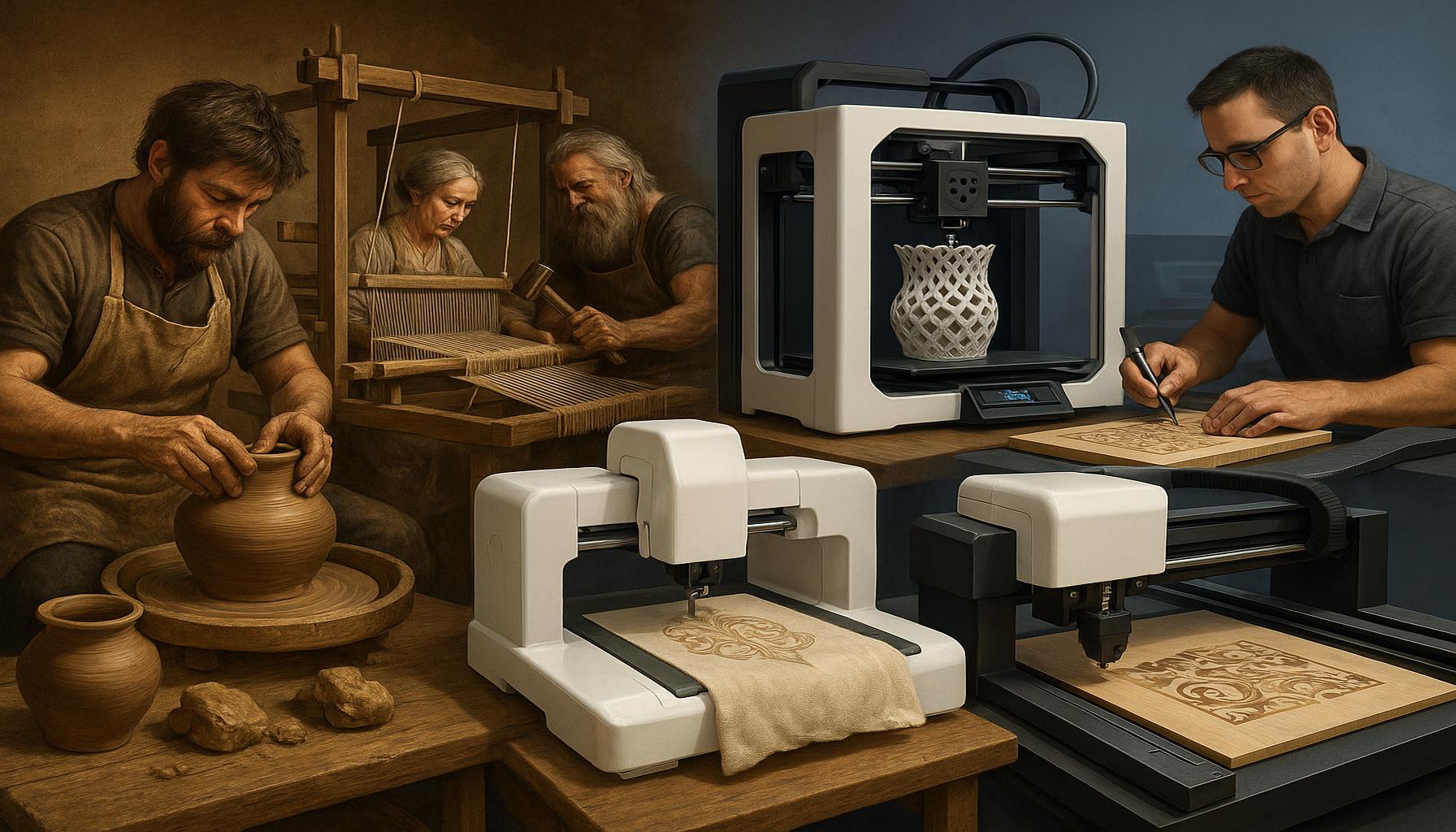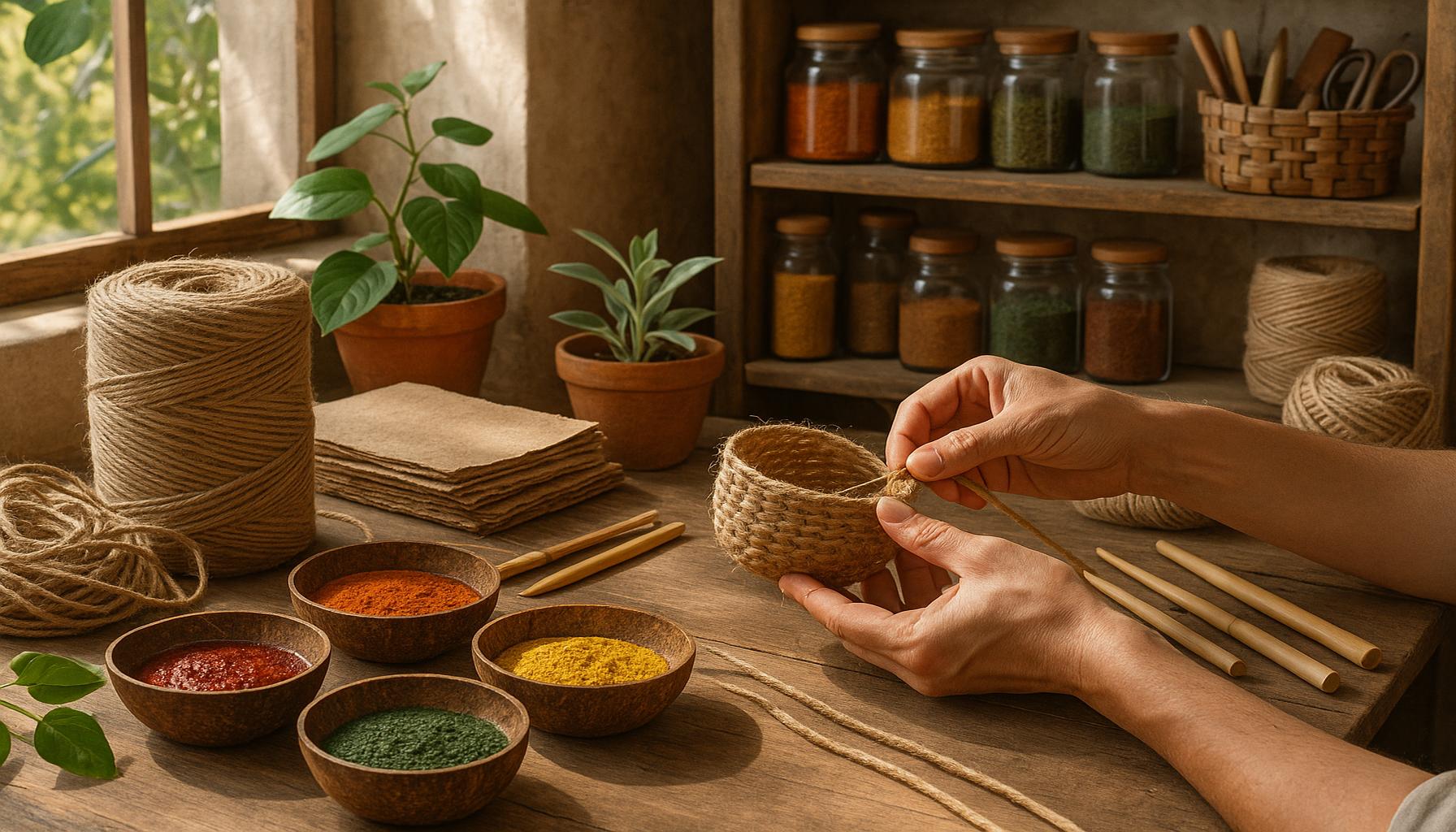Crafting as a Form of Activism: Using Art to Advocate for Social Change

The Power of Creative Advocacy
Over the past decade, the fusion of art and social activism has emerged as a significant force for change. This growing movement sees individuals and communities harnessing their creativity to tackle urgent social issues, transforming personal expression into a collective outcry for justice. Far from merely producing aesthetically pleasing items, these artistic endeavors serve as potent tools for advocacy and awareness.
Crafting as activism manifests in diverse and innovative ways, each highlighting different societal challenges:
- Textile Art: Quilts and embroidery have become mediums for storytelling that convey narratives of both struggles and triumphs. For example, the historic “NAMES Project AIDS Memorial Quilt” mobilized communities in remembrance of those lost to the AIDS epidemic, turning individual grief into a captivating collective tapestry that echoes the urgency of health equity.
- Recycled Materials: Artists are increasingly turning to discarded items to create new art pieces that emphasize environmental issues. Projects like the “Trash the Dress” initiative exemplify this by encouraging the use of old wedding dresses to craft art that speaks to climate change, waste reduction, and sustainability.
- Public Installations: Large-scale art pieces showcased in public spaces provoke thought and dialogue among community members. Installation artists like The Obliteration Room by Yayoi Kusama, who invites visitors to cover a room in colorful stickers, challenge perceptions and encourage participation, transforming passive observers into active contributors.
These artistic expressions are catalysts for engagement, igniting discussions on critical topics and mobilizing communities toward action. Across the United States, artists leverage their crafting skills to challenge normative societal standards and advocate for broader issues such as racial inequality, gender rights, and environmental justice.
Examples abound, from feminist “yarn bombing”—the act of decorating public spaces with knitted pieces—to youth-led mural projects in urban neighborhoods designed to instill pride and convey community narratives. Such initiatives offer unique opportunities for individuals to use simple materials to convey **powerful messages** that resonate with diverse audiences.
As we delve deeper into the world of craft-based activism, we unveil the **transformative potential** of art as a medium for social change. By embracing their creativity, artists not only advocate for causes close to their hearts but also empower voices that are often marginalized within the societal discourse. Join this exploration to discover how the craft of making can indeed inspire activism and shape a brighter and more inclusive future.
DISCOVER MORE: Click here to dive deeper
Crafting as a Catalyst for Change
Crafting as a form of activism is more than just a trend; it represents a profound shift in how individuals and communities engage with pressing socio-political matters. By utilizing accessible materials and collective creativity, crafters are not only creating beautiful pieces of art but are also fostering dialogue and inspiring action around critical issues. The versatility of crafting allows it to transcend traditional boundaries of art, making it a universal language that communicates urgency and promotes social justice.
One of the most significant advantages of crafting in the realm of activism is its accessibility. Almost anyone can pick up a needle and thread or repurpose materials at hand, making artistic expression feasible for diverse groups, including those who may feel marginalized within formal artistic communities. This democratization of art empowers individuals to voice their concerns and experiences, highlighting a variety of social issues such as poverty, mental health, systemic racism, and LGBTQ+ rights.
A prime example of this can be seen in the global Knitting for Peace movement, in which crafters produce items like hats and blankets for those affected by war or natural disasters. These hand-made gifts not only provide warmth but also symbolize solidarity and compassion. With each stitch, crafters are instilling hope and sending a resounding message that their communities care.
Moreover, crafting serves as a form of protest. The renowned Women’s March, with its iconic pink “pussy hats”, illustrates how simple knitting can spearhead a significant movement aimed at advocating for women’s rights and gender equality. These hats became an emblem of solidarity and peaceful resistance, showing that even small acts of crafting can contribute to larger conversations and social change.
As we examine the multifaceted nature of craft-based activism, it becomes clear how this practice can effectively convey emotions and ideas that resonate powerfully with audiences. Various forms of crafting contribute to this growing movement:
- Papers and Collage: Artists engaging in collage work can blend images, texts, and materials to create poignant narratives addressing issues such as immigration, climate change, and political disenfranchisement.
- Jewelry Making: Crafting jewelry with messages or symbols that hold personal or collective significance creates wearable protest art that can generate conversations in everyday spaces.
- Soap and Candle Making: These artisanal crafts often incorporate natural ingredients and sustainable practices, providing platforms to advocate for environmental stewardship while promoting the benefits of eco-conscious living.
Through these creative practices, crafting emerges as a dynamic platform empowering everyday individuals to become advocates for change. As we continue to explore this intersection of art and activism, it is essential to recognize the profound impact of crafting as a form of social advocacy. By bridging the gap between creativity and conscience, individuals are reshaping the narrative surrounding activism and reimagining the world through their artistic expressions.
| Advantage | Description |
|---|---|
| Empowerment | Crafting empowers individuals to voice their beliefs through tangible actions. |
| Community Engagement | Artistic initiatives encourage community participation and collective action for social justice. |
In exploring the concept of Crafting as a Form of Activism, it becomes clear that this approach serves not just as an artistic outlet, but also as a powerful tool for social change. The act of creating—whether through knitting, painting, or other crafts—can significantly bolster individual empowerment. Crafting allows individuals to articulate their values and beliefs in a manner that resonates personally and within their communities. This transformative process encourages makers to advocate passionately for causes they care about, highlighting issues such as climate change, gender equality, and racial justice.Moreover, crafting fosters community engagement. Workshops and group projects bring people together, igniting discussions around social issues while nurturing a sense of belonging. These artistic gatherings create spaces for marginalized voices to be heard, bridging gaps and fostering understanding. By participating in crafted projects, individuals can unite their skills with their shared vision for societal improvement, demonstrating that art is not merely an aesthetic endeavor but rather a profound means of enacting social change.
DIVE DEEPER: Click here to discover the art of storytelling
The Power of Collaboration in Craftivism
While individual expression through crafting is vital for activism, the power of collaboration amplifies the message and impact of social change. By organizing large-scale community crafting events, activists can unite diverse voices under a single mission. These gatherings foster a sense of belonging and shared purpose, as individuals come together to create meaningful works that reflect their collective experiences and concerns. The act of crafting side by side not only strengthens community ties but also enhances the overall visibility of the issues being addressed.
A striking example of this collaborative approach is seen in the Yarn Bombing movements that have cropped up in cities across the United States. Artists and activists come together to “yarn bomb” public spaces—transforming ordinary objects like trees and lampposts into vibrant displays of color and creativity. These unexpected bursts of art invite passersby to engage with their surroundings in new ways while prompting discussions about urban spaces and social identity. As the colorful yarn wraps around these structures, it serves as a form of environmental art that questions societal norms and advocates for community ownership.
Community crafting initiatives also serve as education platforms, imparting knowledge and skills while drawing attention to crucial causes. The Crafting for Change workshops, for instance, offer participants the chance to learn various crafts while discussing topics like climate justice, refugee rights, and mental health awareness. Participants leave not only with handmade items that advocate for change but also with a deeper understanding of the issues. This transfer of knowledge transforms crafters into informed advocates, capable of engaging others in conversations about the sociopolitical climate.
Craftivism has also embraced digital platforms, extending its reach beyond local communities. Social media has become a powerful tool for activists to showcase their work, raise awareness, and organize virtual crafting events. Hashtags like #Craftivism and #StitchingForChange circulate online, connecting individuals worldwide who are passionate about using their craft skills for advocacy. Artists often share tutorials and patterns for creating protest art, empowering their followers to join their cause from anywhere. This digital engagement demonstrates that crafting as activism is not limited by geography; it has evolved into a global movement.
The significance of crafting as a form of activism extends beyond mere aesthetic appeal. It encapsulates the essence of storytelling through art. Each handcrafted piece carries with it the narratives of the artisans and the communities they represent. Skills passed down through generations become instruments of protest, with traditions infused with modern messages that resonate across time and space. Through textile art, embroidery, or collage, crafters weave their stories into the fabric of social movements.
Furthermore, the environmental implications of craftivism cannot be overlooked. Many activists advocate for sustainable practices within their crafting endeavors, such as using upcycled materials or natural dyes. By emphasizing eco-friendly approaches, crafter-activists directly engage in conversations surrounding climate change and waste, promoting awareness of sustainable consumption. This intersection of artistry and environmentalism showcases how crafting can embody a holistic approach to social outreach.
As the movement continues to grow, the adaptability of crafting in activism demonstrates its potential as a transformative force for society. The various forms of collaborative crafting not only elevate individual voices but also shed light on the collective power of creativity as a means to provoke change. By harnessing this power, communities are reimagining what it means to advocate, one stitch, one design, and one shared experience at a time.
DIVE DEEPER: Click here to uncover the art of emotional music composition
Conclusion: The Intrinsic Connection of Craft and Activism
In conclusion, crafting has emerged as a powerful medium for activism, transcending mere artistic expression to become a vital tool for social change. Craftivism exemplifies how art can be humanized and made accessible, providing a platform for individuals to voice their concerns and participate in the fight for a more equitable world. Whether through community events, digital campaigns, or environmental initiatives, the act of crafting unites diverse communities around shared goals, demonstrating that collective efforts can lead to significant impact.
The stories woven into each crafted piece not only keep traditions alive but also amplify contemporary social issues, fostering conversations that challenge societal norms and provoke thought. This intersection of creativity and discourse is essential in a time when dialogue around crucial topics like climate change, social justice, and mental health is more necessary than ever.
As we observe the growing landscape of craftivism, it’s essential to recognize that every stitch and design carries the potential to inspire change. Individuals are encouraged to explore their creative outlets—be it through knitting, sewing, or other artistic expressions—as avenues for advocacy. By doing so, they not only contribute to the broader movement but become part of an evolving narrative that celebrates the resilience and creativity of communities.
Ultimately, crafting as activism invites us all to partake in a larger conversation. It proves that art is not just for beauty but can serve as a catalyst for pivotal social transformations. The challenge lies ahead; it is our collective responsibility to harness this creativity for change, ensuring that every craft created serves as a testament to the power of art in advocacy.


